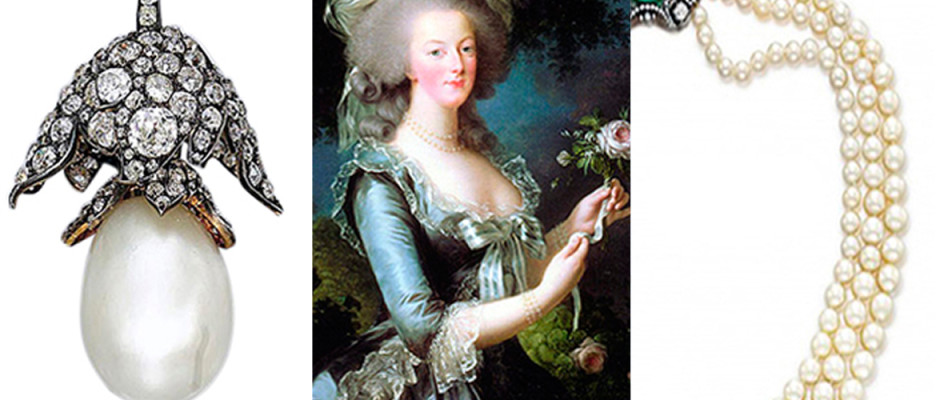
PROVENANCE. Of all known gemstones, royalty has always favored the pearl due to its rarity and beauty. Some are familiar to us from royal images and portraits, but unfortunately, the fate of most of these jewels remains a mystery. But once in a while and very rarely, some important pieces appear on the market.
5. Elizabeth Taylor La Peregrina $ 11.8 million (sold by Christie’s in 2011)
“La Peregrina” in Spanish means “the Pilgrim” or the “Wanderer”. Without doubt, this pear-shaped pearl traveled around. It is widely considered as one of the most important pearls of the world with a recorded history of 550 years, and having been owned by Elizabeth Taylor. In 1969, Richard Burton spent $37,000 to buy Elizabeth Taylor the La Peregrina for her thirty-seventh birthday..
The necklace is a double-stranded pearl necklace interspersed with equally spaced floral patterns eight in number, each having a ruby as its centerpiece, surrounded by diamonds in a floral pattern. The outer strand of pearls is composed of larger drop-shaped pearls, and the inner strand composed of smaller round-shaped pearls. The “La Peregrina” pearl is attached to this necklace as the lower part of an elaborate pendant. The centerpiece of this pendant is a floral design consisting of a central pear-shaped ruby surrounded by diamonds in a floral pattern.
NATURAL PEARLS. The strong auction market for natural pearls towards the end of the 20th-century that still continues into the 21st-century. The near exhaustion of natural pearl resources at the beginning of the century has led to a finite supply of these gems and explains their ever increasing value. The La Peregrina being sold at a staggering price of more than $11 million shows the strong appreciation of the value of natural pearls.
6. Baroda Pearls $ 7.1 million (sold by Christie’s in 2007)
The historic Baroda Pearls was worn for centuries by the Indian Maharajas from the Royal state of Baroda. The Baroda pearls are incomparable on so many levels. This exceedingly rare and historically important necklace presents an unrivaled opportunity for the modern collector through its combination of exceptional royal provenance, unrivaled quality, and exceptional rarity. This is a supreme example of “the ideal pearls”, a belief first embraced by Indian Royalty centuries ago
Having amassed huge quantities of pearls from all over the Gulf region, the Indian Royal families were famed for the superlative natural pearls in their treasuries. The seven-strand Baroda pearl necklace was the masterpiece of all these collections. Considered to be one of the most notable jewelry collectors of the Nineteenth century, the Maharaja of Baroda, Khande Rao Gaekwar (r.1856-1870) came to possess this extraordinary pearl necklace which is composed of seven strands of perfectly matched and graduated natural pearls. Each luminous strand radiated elegance, wealth and power, and would be the prized possession of Royal Gaekwars of later generations.
Christie’s auctioned off the two remaining, graduated strands. Comprising each strand are the most perfect and largest pearls selected from the fourth, fifth, sixth and seventh rows of the original seven-strand necklace. All sixty-eight radiating pearls are impeccably matched in color, luster, size and shape, and are joined by a stunning cushion-cut diamond clasp mounted by Cartier. Complementing this royal treasure are a pair of natural pearl and diamond ear pendants, a brooch, and a ring en suite.
7. Duchess of Windsor Single-Strand Pearl Necklace $ 4.82 Million (sold by Sotheby’s in 2007)
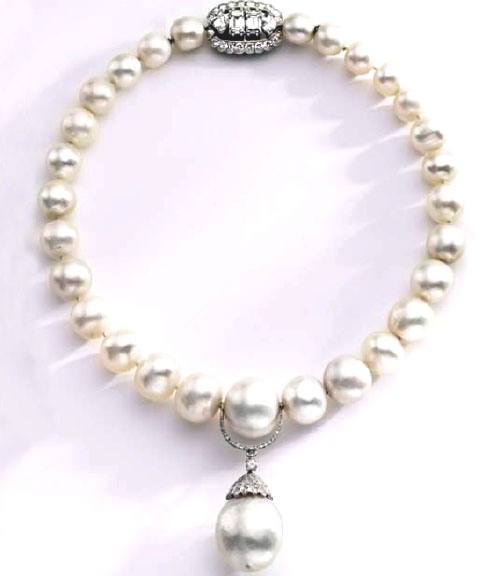
In 1987 Calvin Klein bought the natural pearl jewels from the Duchess of Windsor’s collection for his then wife, Kelly, because of their extraordinary quality and provenance and classic style. The Duchess of Windsor was often photographed wearing the necklace and pendant. The single-strand natural pearl and diamond necklace by Cartier, Paris, once belonged to Queen Mary, wife of King George V, who gifted it to her son, the Duke of Windsor. Her pearls spoke of the romance they celebrated and the glamorous lifestyle she shared with the Duke of Windsor
The single-strand natural pearl and diamond necklace is composed of 28 natural pearls completed by an oval clasp set with 2 emerald-cut diamonds weighing approximately 2.00 carats and 2 fancy-shaped diamonds The length of the necklace is 14 inches, with a clasp signed Cartier, Paris. The large natural slightly baroque pearl and diamond pendant, Cartier, Paris, circa 1950, may be worn as a drop on the aforementioned necklace.
8. Marie Antoinette/ Barbara Hutton Single-Strand Pearl Necklace $ 1.6 million (sold by Christie’s in 1999)
The name refers to a magnificent single-strand pearl necklace, with a great historic significance that once belonged to Marie Antoinette, the queen consort of King Louis XVI, the monarch of France, who together with his wife were guillotined to death during the tumultuous days of the French Revolution from 1789 to 1793. The necklace eventually came into the possession of Barbara Hutton, the granddaughter of Woolworth department store magnate, who was the heiress to an immense fortune left behind by her grandparents and mother, and became one of the richest women in the world. Barbara Hutton inherited $40 million (the equivalent of at least $2 billion today) on her twenty-first birthday in 1933. Mr Franklyn Laws Hutton, father of Barbara purchased it as a gift on the occasion of her marriage to Prince Alexis Mdivani, on June 1933 and it was rumored, at the time, to have cost $1,000,000. A great collector and connoisseur of jewelry, Barbara was particularly fond of Marie Antoinette’s single-strand pearls. It was the jewel that she most frequently wore.
This magnificent necklace is composed of 41 graduated natural pearls with an old mine-cut diamond cluster clasp (clasp of later addition).
Among the pearls, which one do you like best? Share your thoughts below.
Tags: popular
3 Response to The “The World’s Most Expensive Pearls (Part 2)”
Comments are closed.




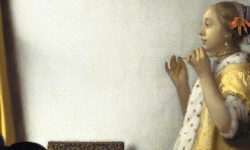
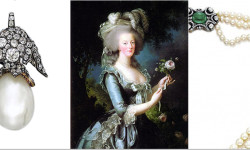
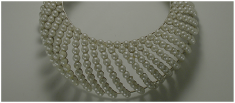
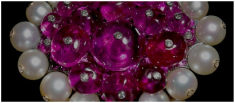
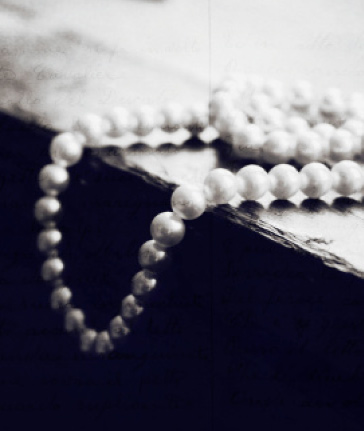
Wonderful stories about pearls…every single piece carry on its own unique origin, mystic, and rarity to make it a truly exclusive and almost unreachable entity.
The Duchess of Windsor single strand necklace is my favorite of the pieces above: despite the years that have passed since its creation, the necklace design is timeless and will carry on for many more years.
I understand that natural pearls are limited. I am wondering about the pearls of royalty that were painted centuries ago. What happened to those pearls? They must cost a fortune now.
The huge cross suspended from this long strand of pearls was a loan from Garrard’s. This was at a charity event. If anyone has more information on date and event, please share it so I may put the information on this site.